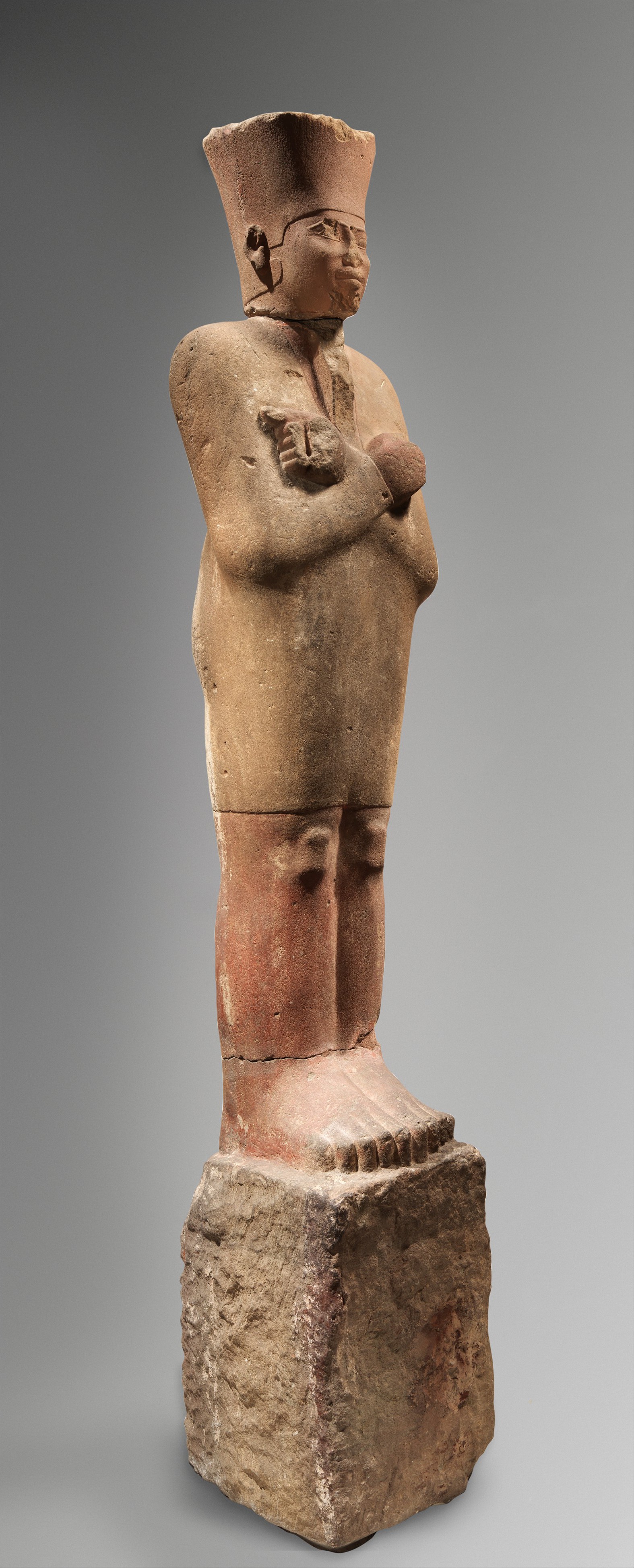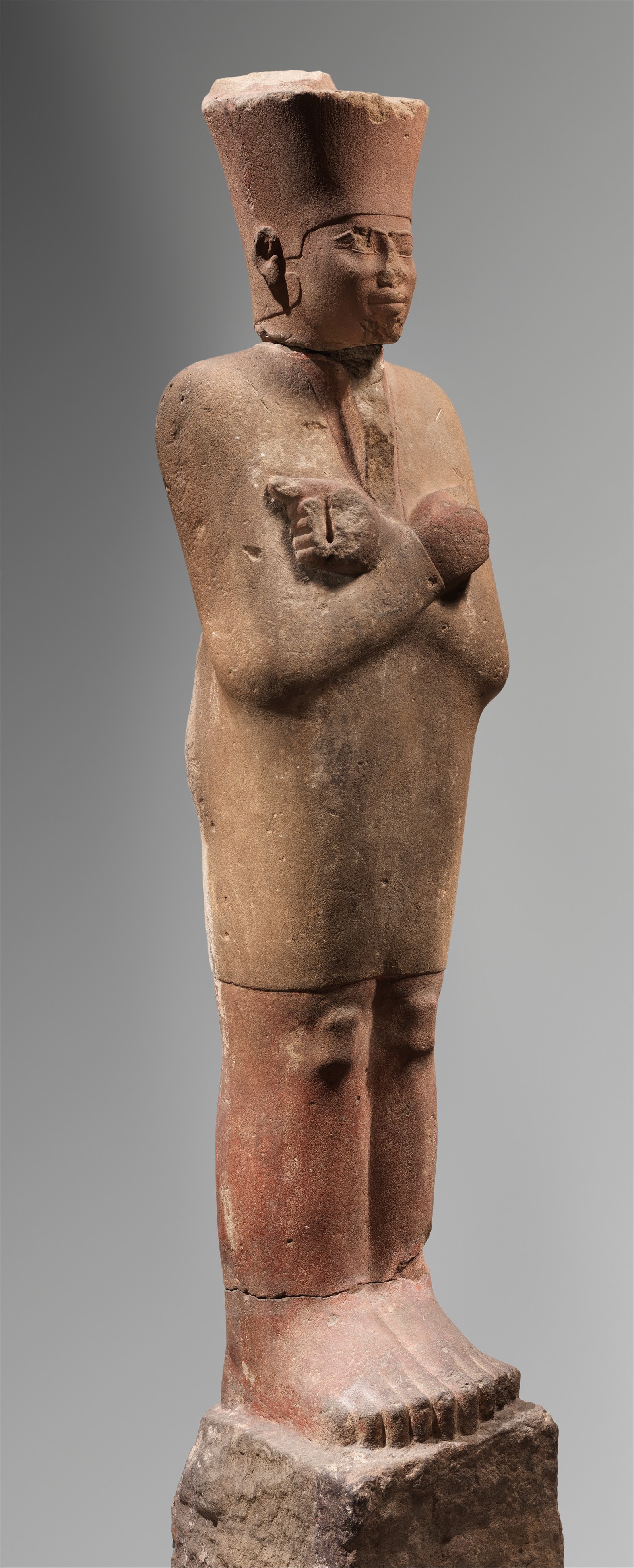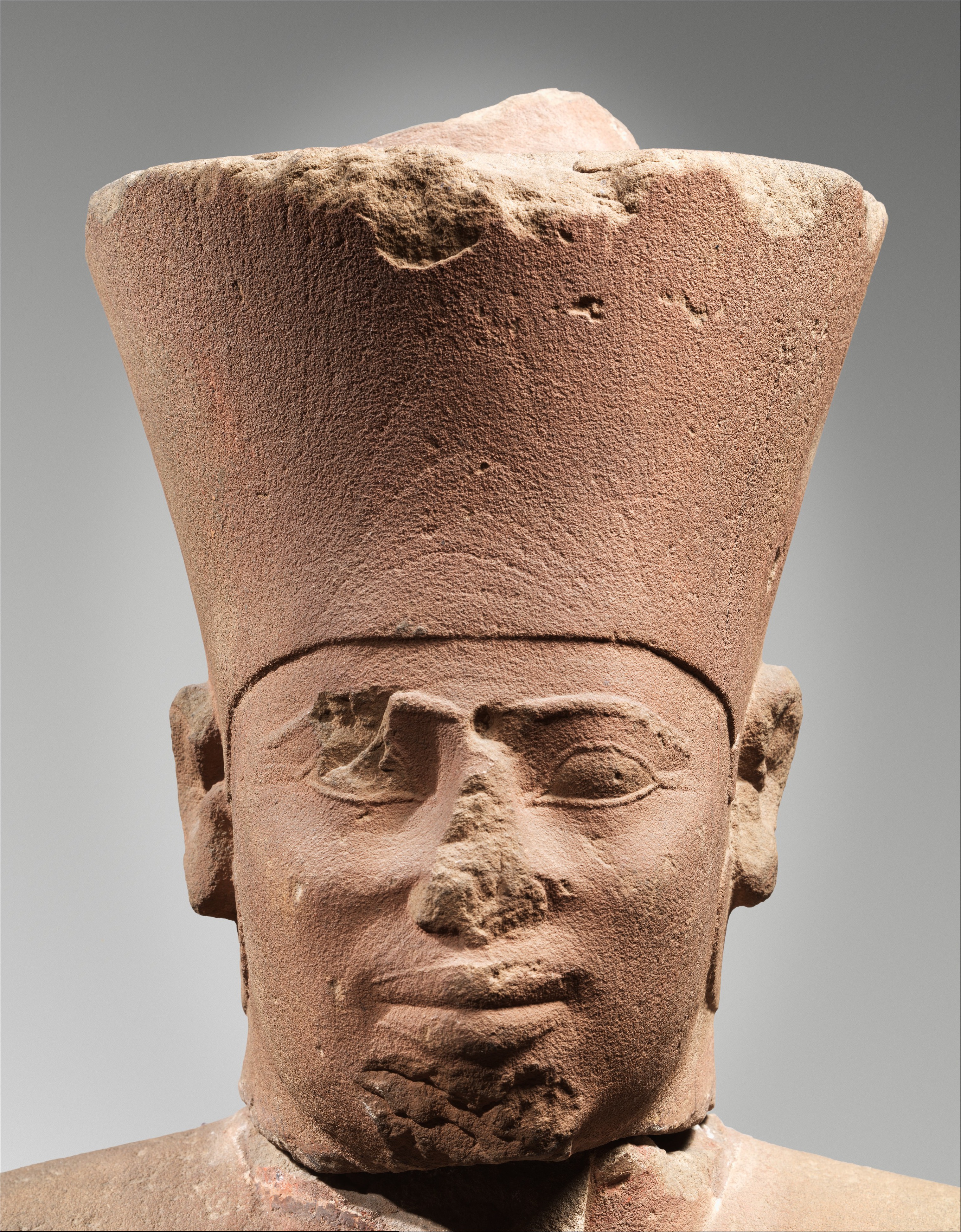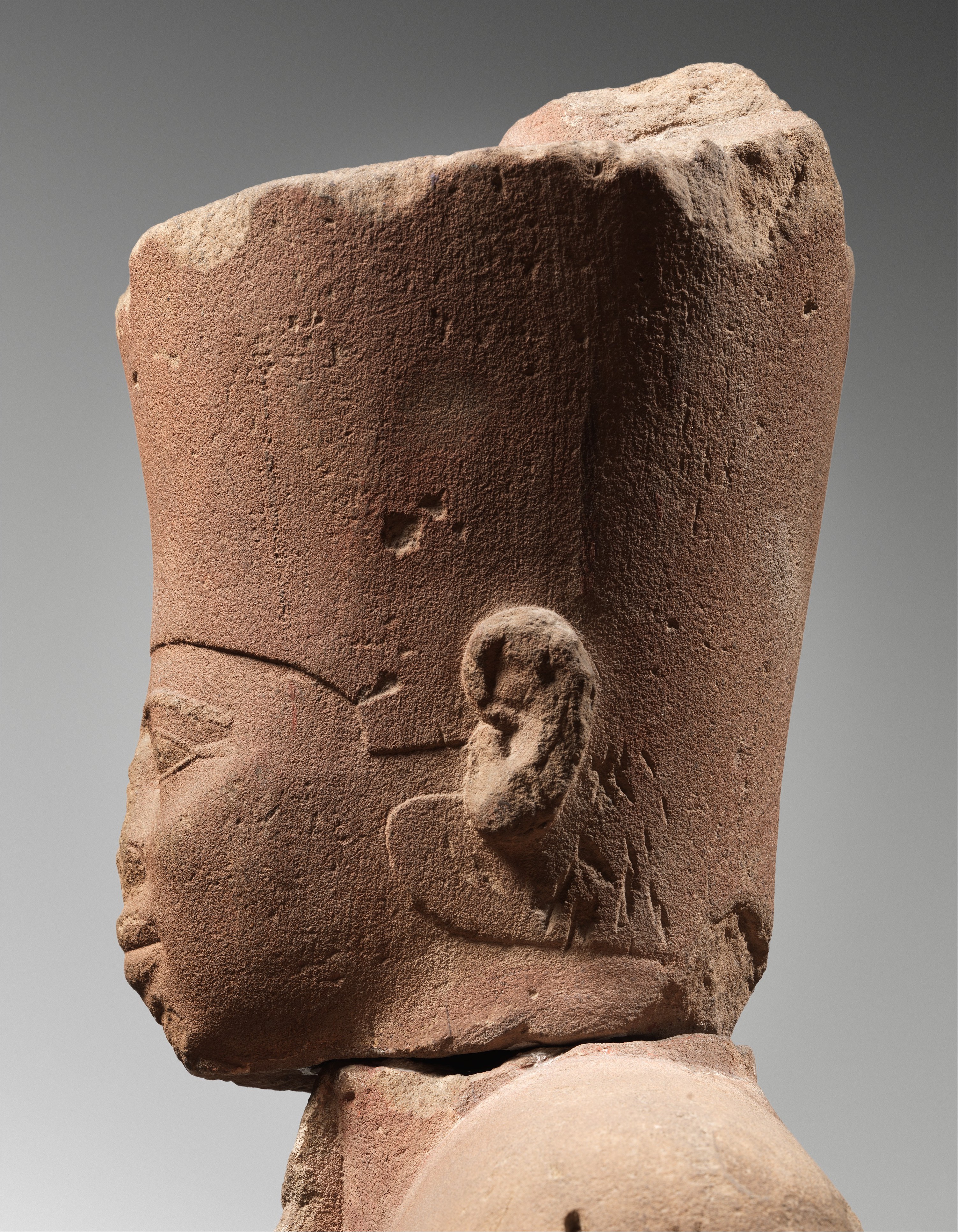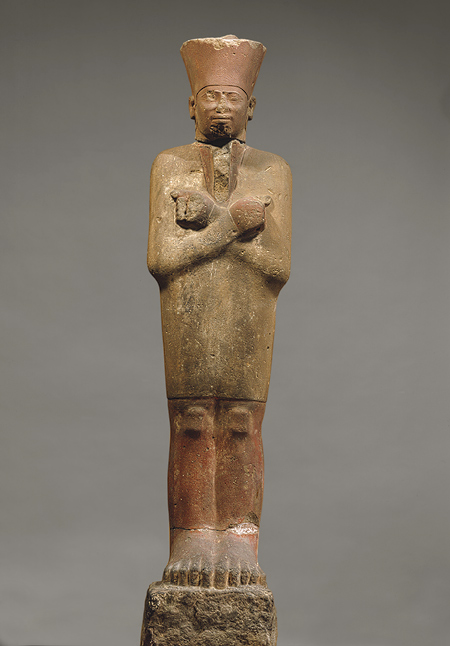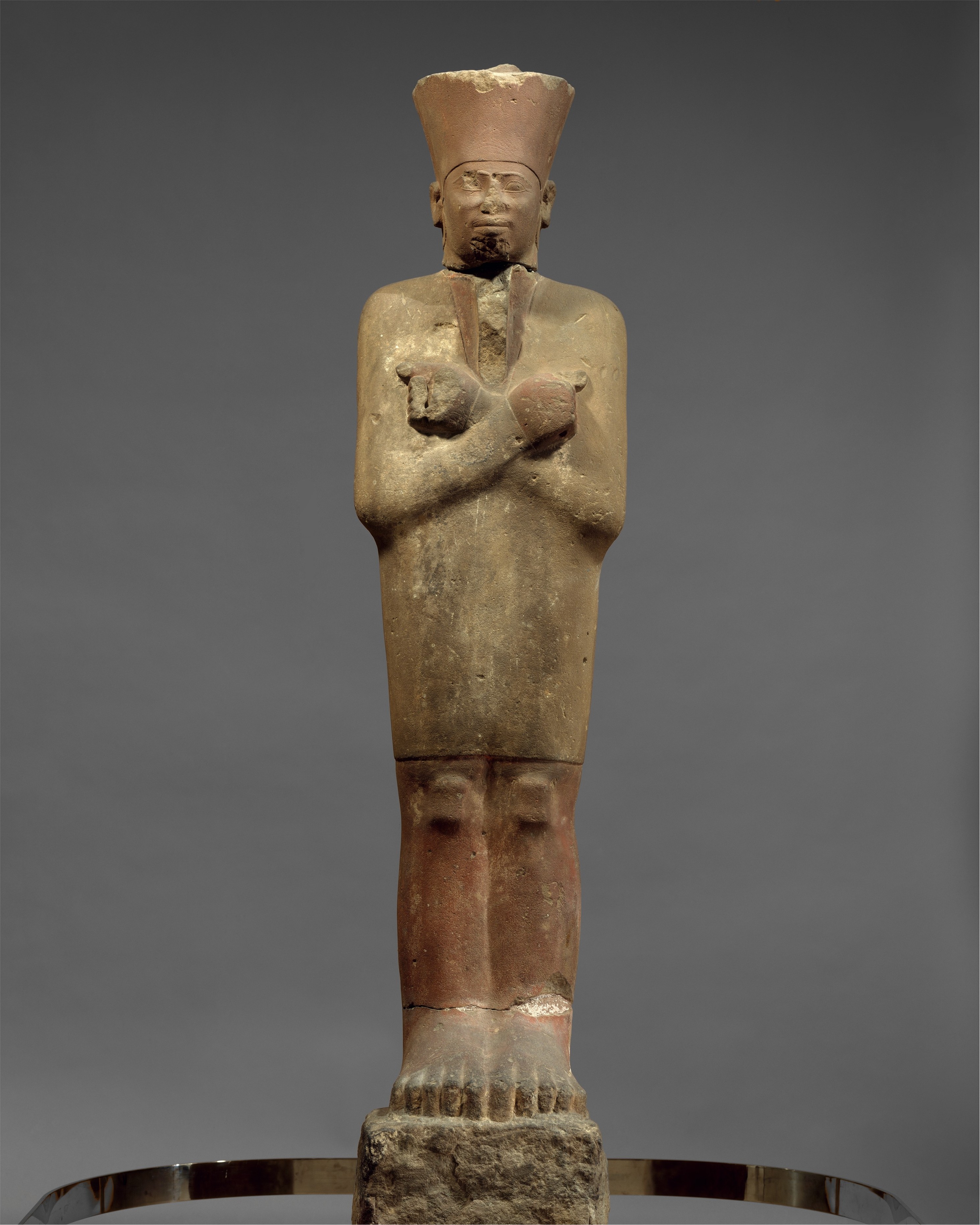Statue of Nebhepetre Mentuhotep II in the Jubilee Garment
Middle Kingdom
Twenty-two statues of this type stood beside (but not in the shadow of) sycomore and tamarisk trees that lined the processional path through the forecourt of the mortuary temple of Nebhepetre Mentuhotep II at Deir el-Bahri. The rough, rectangular base was inserted into the ground. The king wears the traditional short mantle of the pharaoh's thirty-year jubilee festival (Heb Sed). In his fists were the now missing scepter and flail of Egyptian kings and the god Osiris, probably made of metal. The head on this piece wears the "red" crown of Lower Egypt. Although no head with the "white" crown of Upper Egypt was found, it is conceivable that the statues along the south side of the path wore the "white" Upper Egyptian crown, while the ones along the north side wore the "red" Lower Egyptian one. At some later time all statues from the forecourt were decapitated and broken up. Some bodies were buried close to their original places, others were moved around. Most of the heads are missing. Both the body and head of the Museum's statue were found in the area of the temple of Hatshepsut, which is adjacent to the Mentuhotep temple. It is not certain that the head really belonged to this particular body.
The style of the statue is intentionally archaic, presumably because Mentuhotep II was commemorated as the ruler who reunified the country after the First Intermediate Period, thus restoring Egypt to its original state as first created during the late Predynastic and early Dynastic Period.
#3285. Statue of Mentuhotep II
Due to rights restrictions, this image cannot be enlarged, viewed at full screen, or downloaded.
This artwork is meant to be viewed from right to left. Scroll left to view more.



